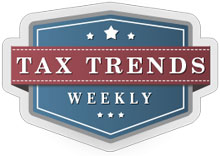Middle Class May Face Tax Hikes
It is well-documented that the United States has had historically high budget deficits the last five years. These deficits add to the national debt, which as of April 2013 stood at almost $16.8 trillion, with almost $12 trillion of that being held by the public (the remaining $4.8 trillion is held by non-Treasury departments of the federal government). If the U.S. continues to run massive annual deficits, the national debt will reach the point where investors will become fearful that the U.S. will turn to inflation to erode the value of the debt. This risk of inflation will cause investors to demand higher rates of interest on U.S. bonds. These higher interest rates would create the potential for the country’s financial problems to spiral out of control; interest payments on the debt would take up ever-larger portions of budget, crowding out useful government spending and causing taxes to rise to the point where they discourage economic activity.
The country’s fiscal problems are due in large part to the entitlement programs of Medicaid, Social Security, and (especially) Medicare. However, even if these programs are reformed, they will remain problematic because so much of health care costs are attributable to expensive technological advancements. Not only are these advancements expensive in themselves, but they increase longevity which creates yet more stress on the entitlement programs.
The cuts in federal income tax rates during George W. Bush’s first presidential term undoubtedly benefitted high-earning Americans. However, they also substantially benefitted middle-class Americans. The Bush tax cuts made the following changes to the federal income tax brackets:
- The then-39.6 percent rate went to 35 percent;
- The then-36 percent rate went to 33 percent;
- The then-31 percent rate went to 28 percent;
- The then-28 percent rate to 25 percent.
- A new 10 percent bracket was created for low-income workers.
Recent data shows that America’s tax system is progressive: in 2012, the Congressional Budget Office’s data showed that the top 20 percent of earners paid 68 percent of federal taxes. In 2009, the top one percent of earners paid 29 percent of their income in federal taxes, while the middle quintile (the 40th to 60th percentile) paid 11.1 percent of their income in federal taxes.
What the information above suggests is that middle-class tax hikes may be on the radar in the near future. However, both parties seem to have an implicit agreement not to raise taxes on the middle-class; during the fiscal cliff negotiations at the end of 2012, both parties largely agreed that taxes should not rise on the middle-class. Instead, the debate was over tax rates for people in the upper brackets. (Ironically, President Obama and the Democrats were adamant that the expiration of the Bush tax cuts would harm middle-class families, even though their rhetoric for years had been that the Bush tax cuts were a giveaway to the wealthy.) This agreement is all but certain to come under increasing pressure in the future as the U.S. grapples with its fiscal problems.

